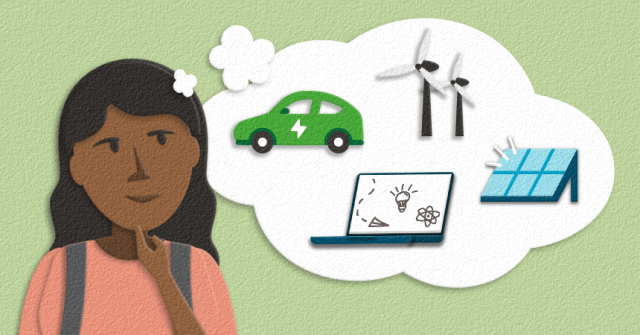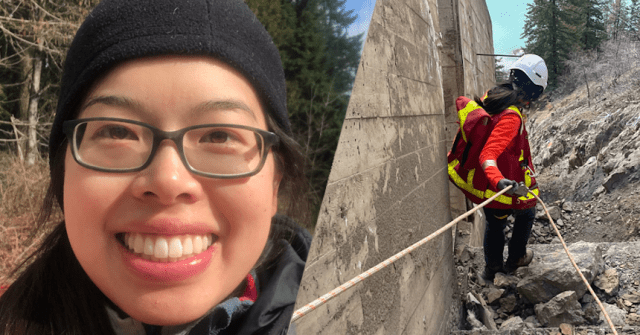Students are using them. Teachers are using them. But in most regions of North America – including in B.C. grade schools – formal policies are not in place as to how to use artificial intelligence (AI) tools and how not to use them.
Depending on who you talk to, AI is either a positive or negative force for both teaching and learning. And in the minds of many, it’s both.
Ask AI’s current it-bot, ChatGPT, about what the limitations should be on chatbot use by elementary and secondary school students, and it offers its own cautious assessment.
“It's important to acknowledge certain limitations and exercise caution to ensure students’ well-being and educational development,” says the ChatGPT tool, before going into detail about chatbot limitations such as:
- questionable reliability and accuracy
- lack of emotional intelligence
- potential bias in data, including reinforcement of negative stereotypes or perspectives
- limited understanding of context
- potential for student dependency on the tool, and
- privacy and security concerns.
But AI is here and is increasingly becoming a part of education. Teachers are leaning on it as a timesaver for scheduling, general and personalized lesson plans, report card tracking and a variety of other administrative duties. And a growing number of students are relying on it as a study aid, research tool, for brainstorming, and for collaboration with other students.
Some students are developing critical thinking skills by using AI in large part by understanding its limitations. Others are using it as a shortcut that, in some cases, is simply cheating. It’s creating a stew of excitement and fear.
Poh Tan, a STEM education consultant and CEO of STEMedge Inc., says AI was a hot topic in many panel discussions at last November’s Canadian Science Policy Conference in Ottawa.
“When the education piece came up, the consensus was that more progressive teachers, and often pre-service and new teachers, are already there,” said Tan. “These teachers are saying, ‘it’s not scary – I’m already using it every day in teaching, and it’s really a matter of how you use it responsibly and ethically’.”
How do we help students use AI safely and effectively?
As the current school year kicked off in the fall, B.C.’s Minister of Education and Childcare Rachna Singh said the Ministry was researching AI and how best to support teachers and students around the use of generative AI tools.
With the AI landscape changing quickly, at least one school board has adopted a “no-policy” approach that allows for the use of AI, with a caveat. Mission Public School District (MPSD) superintendent Angus Wilson told the Mission Record that teachers and students in the district can use AI tools but need to acknowledge that they’re using them.
That wait-and-see approach seems to be the rule rather than the exception in B.C., with transparency around it a common first step. The University of B.C. has published best practices and AI guidelines around the use of generative AI, and states that use of AI does not automatically equate to academic misconduct at UBC. “Whether the use of AI tools in courses is or is not allowed is a course or program-level decision and there is no overall, UBC-wide ban on its use in teaching and learning,” says UBC in an FAQ about the use of ChatGPT.
Many teachers and learning consultants are embracing the use of AI and sharing their thoughts on best practices with fellow staff and beyond. Here are a few of those ideas and tips:
- Consider generative AI tools other than ChatGPT: While wildly popular, one issue with ChatGPT is that it doesn’t cite sources, unless prodded. Simon Worley, a high school teacher at Handsworth Secondary in North Vancouver, told the CBC that he’s particularly big on Perplexity AI , which automatically lists sources as it answers questions. Another helpful AI tool is Goblin Tools, which helps simplify tasks by providing step-by-step directions.
- Use AI tools for fun, creativity… and math. An excellent edutopia.org 9 tips post from last fall includes ideas for using AI to animate student drawings, to generate drawings as writing prompts, to spur scientific thinking, to find faults in historical images, to see all sides of a math problem, to learn about voice in writing, and to speak with AI in a foreign language.
- Help students understand how AI works: Richard Culatta, CEO of the International Society for Technology in Education, says students need to learn about how AI works, and how best to partner with AI in their work. Interviewed for a story on k12dive.com, he suggested asking students to use AI to come up with six possible solutions to a problem, and then assess the flaws and benefits of each. For elementary school students, it may be best to try something like ChatGPT as a group, exploring and discussing both its shortcomings and potential.
- Use AI to develop personalized lessons: Based on a student’s past performance, skills, and any feedback they’ve provided on content, AI can help develop lessons that are more engaging. In particular, there’s excitement around customized lessons for students with learning disabilities or for those who are neurodivergent. “I'm a neurodivergent individual – I have dyslexia and ADHD – and I have trouble with focus and with reading,” says Daniel Asel, creative director of B.C.’s Kidzsmart Communications. “I use a variety of AI tools, not just for research, but in general to assist me in areas where being neurodivergent poses challenges. In many ways, various AI tools can be a great equalizer as they help me comprehend the world around me a bit easier.” Asel says neurodivergent individuals can be powerfully creative, so having an open dialogue about both their challenges and their strengths – and leveraging AI tools in an ethical way – can really help.
- Explore how to write effective questions for ChatGPT: Common advice around producing prompts for chatbots includes being clear and precise, using easy-to-understand words, avoiding questions that lead to yes or no answers, and reworking questions until you get the information you’re looking for.
Other resources on best practices for the use of AI
There’s a whole lot of conversation out there about how best to employ AI tools in the learning environment. Here are a few more links that might help you develop your own best practices in helping students use these tools safely and effectively.
AI in teaching and learning (University of B.C.)
UBC’s Centre for Teaching, Learning and Technology offers a range of resources for educators.
The future is artificial intelligence. Are students ready? (k12dive.com)
K12dive.com provides news and insights into K-12 education, and they have an increasing number of articles about AI, including the above topic and Want to make math more fun? Consider asking ChatGPT.
Top 6 use cases for generative AI in education (aimultiple.com)
This teacher-focused piece looks at how AI can help teachers with personalized lessons, course design, data privacy protection, content creation, the restoration of older learning materials, and tutoring.
Here’s what educators can do as artificial intelligence evolves (commonsense.org)
Another teacher-focused piece that emphasizes explorations into the likes of deepfakes, consent, algorithmic bias, and the environmental impacts of AI tools.
Integrate AI research into in-class activities
Numerous Power Smart for Schools activities and lessons offer the opportunity for students to employ AI chatbots as part of their investigation of a topic. Here’s a sampling of activities that might lend themselves to exploration with the help of AI tools.
Researching the environmental effects of vehicles (Grade 10)
Students use criteria to generate and refine effective hypothesis and inquiry questions that could be used to determine which type of vehicle is better for the environment. Students can use a chatbot to get basic information about the environmental effects of different vehicle types (gas, electric, hydrogen) and can build on that by exploring how that comparison might change in the context of B.C.’s access to clean and renewable power.
Hidden energy of the technology world (Grade 10)
In two activities, students explore what tech companies are doing and learn how to discern true corporate commitment to a sustainable, low carbon future. Encourage students to use a chatbot to get information on the energy costs of the likes of cryptocurrency mining. In the sustainable solutions activity, they can use a chatbot for assessments of how well specific companies are adhering to their sustainability goals, including GHG emission reduction targets.
Do we have the power to live on Mars? (Grade 11)
In this activity, students deepen their understanding of energy-related technologies used on Earth and practice their abilities to make scientific evidence-based decisions. They might employ a chatbot to explore energy generation options on Mars and/or the challenges of living on the planet.
How powerful is your question? (Grades 4-6)
Students will practice Identifying questions to answer or problems to solve through scientific inquiry. It opens the door to layer in an exploration on how to develop and refine questions when using chatbots – try it as a shared activity with the class. It can be an effective way to test the effectiveness of student questions.
A whale of a time (Grades 4-7)
Students learn to separate fact from fiction when it comes to keeping our oceans healthy and protecting species at risk. Teachers can consider the use of a chatbot to get an assessment of different activities aimed at ocean health and protecting species, and can discuss how and why the chatbot’s results might be inaccurate or misleading. They can also ask which actions might be effective at the individual level.






